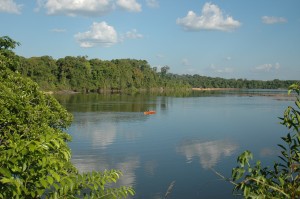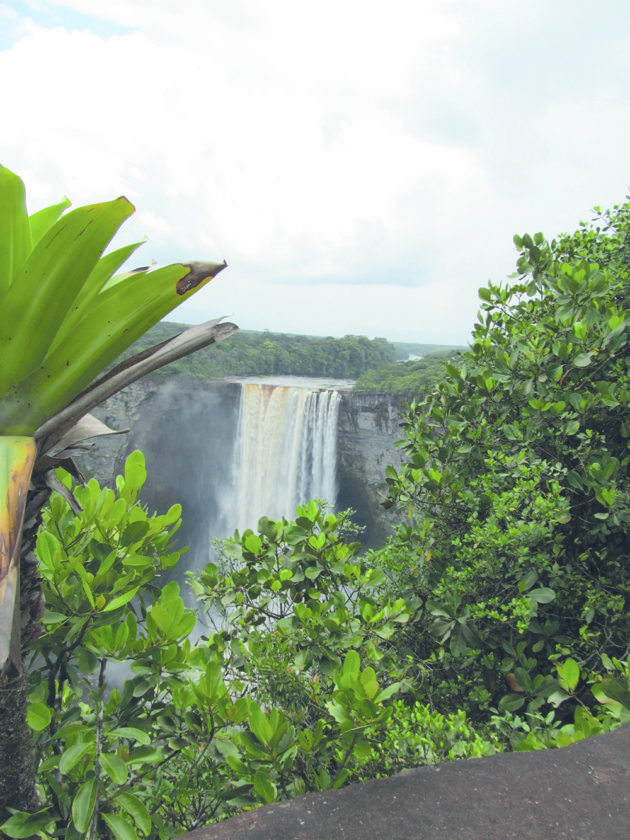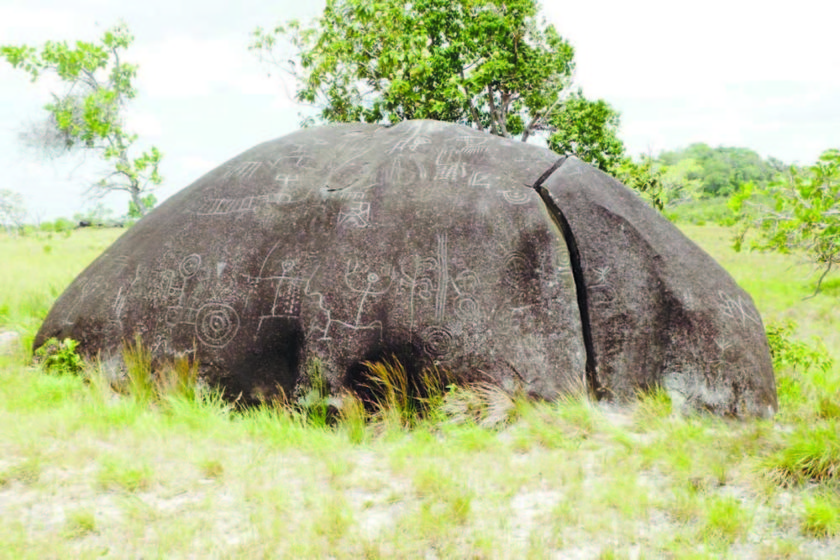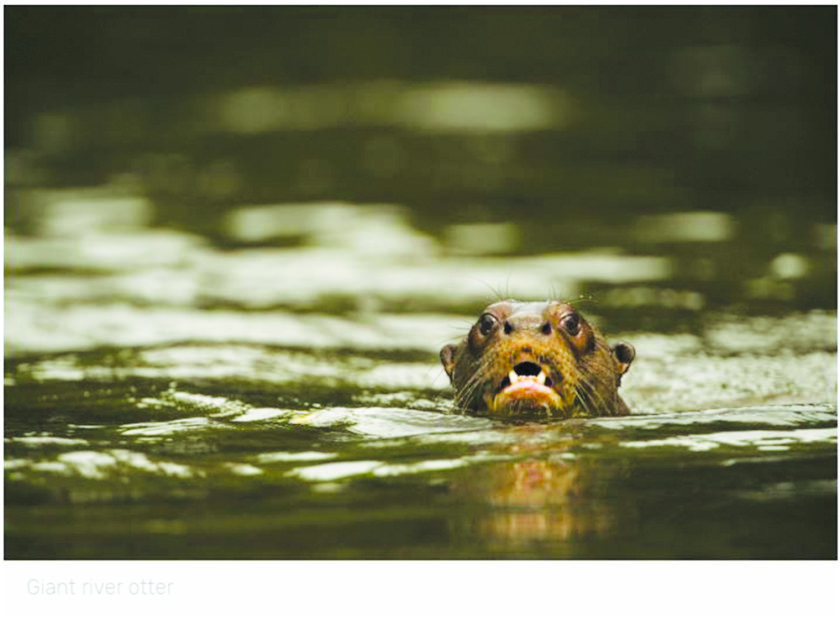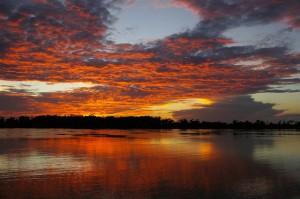
Guyana has an elaborate system of rivers and creeks that have their sources in the great mountain ranges to the south and west; they flow northerly and easterly, reaching the Atlantic Ocean after meandering through virgin forests.
Many of the rivers border with neighbouring Venezuela, Brazil, and Suriname. Four major rivers crossing the Guyana coastal plain are the Essequibo, the Demerara, the Berbice, and the Corentyne.
The Essequibo is the largest river in Guyana. It rises in the Kamoa Mountains on the Brazilian border and flows north for more than 600 miles to enter the Atlantic Ocean through a large estuary sprinkled with islands.
The river is fed by many tributaries, including the Rupununi, the Potaro, the Mazaruni, the Siparuni, the Kiyuwini, and the Cuyuni rivers.
For more than 20 miles (32km) from its mouth, the Essequibo river’s channel is divided by the large flat and fertile islands of Leguan, Wakenaam, and Hogg Island. Fort Island is situated off the middle of Hogg Island, on the eastern side.
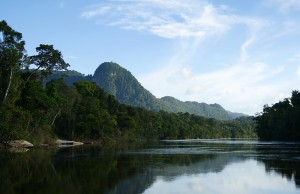
The Demerara River flows in eastern Guyana. Its source is found in the Maccari Mountains, and it flows north for 230 miles to enter the Atlantic Ocean at Georgetown. The Demerara is navigable for ocean-going vessels for approximately 60 miles upriver from the mouth to the bauxite town of Linden. Its major tributaries are the Kamuni, the Kuliserabo, Madewini, Moblissa, and the Kara-Kara rivers.
The Corentyne River is located in east Guyana. Its source is located in the Acari Mountains, and it flows north to the Atlantic, forming the boundary between Guyana and Suriname, its eastern neighbour.
The river is approximately 475 miles long, and is broken up by five waterfalls and many rapids. Seagoing vessels can ascend 45 miles to the first set of rapids at Orealla. The mouth of this river is at least 20 miles wide and is also fed by the Nickerie River which rises in Suriname.
Waterfalls
The Potaro River begins at the Ayangana Mountain Range in the North Rupununi Savannahs, and extends 140 miles to the Essequibo River. Nine waterfalls are located on the Potaro, the most notable being the Kaieteur and the Tumatumari falls. A 1930 suspension bridge, the Garraway Stream Bridge crosses the river, as well as ‘Two Islands’, found on the Potaro River.
